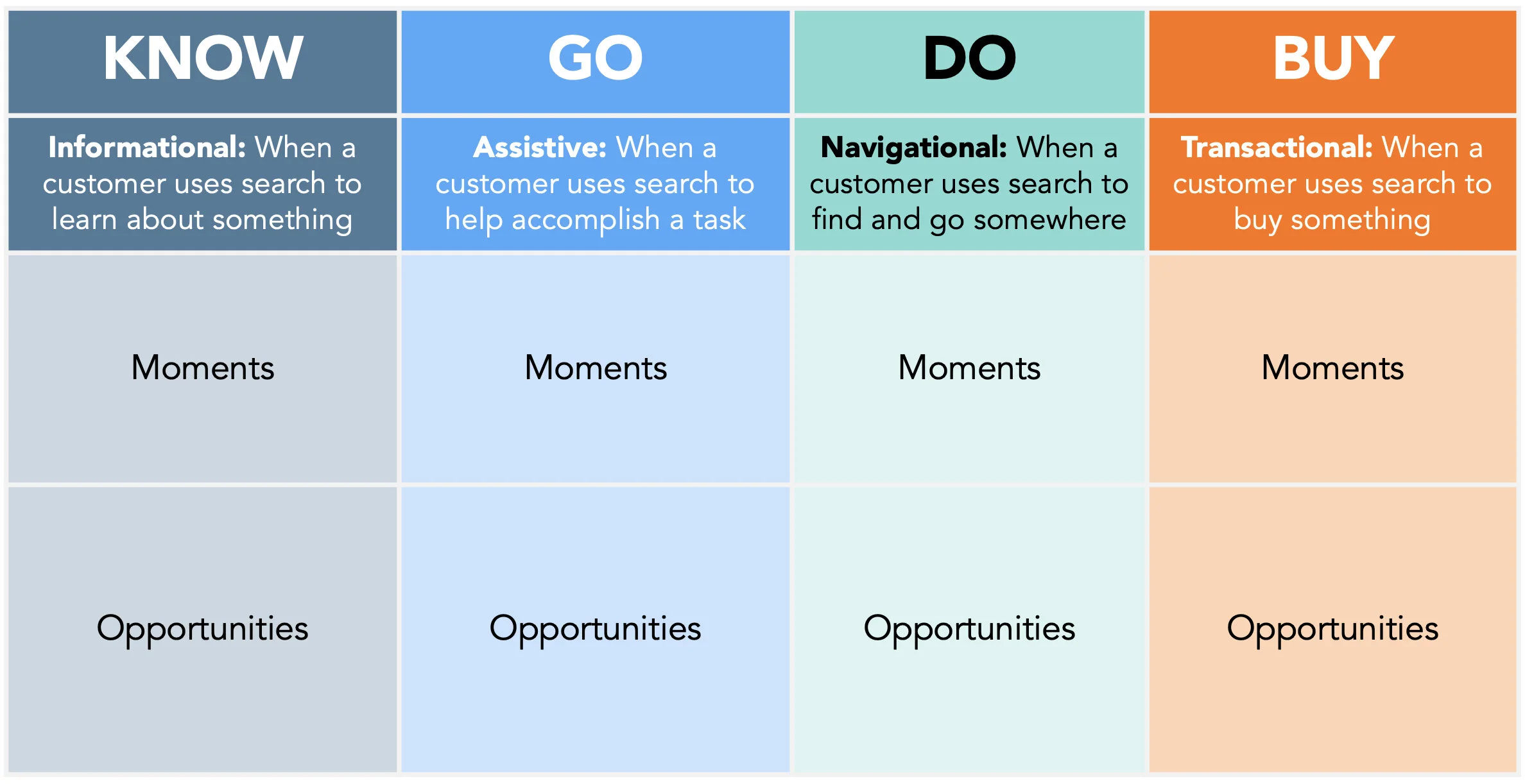Description
The purpose of the Search Moment Framework is to identify opportunities to engage and serve customers in moments of need through search marketing. This Framework is based on the Micro-Moments concept developed by Google. This concept identified four emerging moments of need that customers were turning to search – and more specifically mobile search – to address. The opportunity for marketers is to explore how these moments relate to their own customers and businesses as the basis for new search marketing campaigns. These search marketing campaigns can include both executing paid search advertising and creating search engine optimization (SEO)-friendly content to target relevant search queries. The goal is to increase the share of search intent that your brand captures within search engine results pages (SERPs).
Questions
The Search Moment Framework helps to answer marketing questions like:
What new types of search queries should we consider targeting with search marketing?
What areas of search intent should we be focusing on most?
How has mobile impacted what our customers might be searching for?
Steps
To start, make sure that you are clear on the nature of the target customer and the journey they are on, or the goal that your customer is trying to ultimately achieve. This will form the basis for your exploration.
Explore Know moments by considering any informational barriers that may prevent a customer from choosing you. What are they unclear about? What topics might they want to research or dig deeper on?
Explore Go moments by considering location-based way-finding questions that your customer may have on their journey. Do you have a location near me? What are your hours of operation?
Explore Do moments by considering relevant and common tasks that your customer may be trying to complete. What might they need help with? What ‘how-to’ content might our customer find valuable?
Explore Buy moments by considering the steps that a customer might take along their path to purchase-online and offline. Where can I buy this online or near me? Who is selling this at the best price?
Considerations
Once completed, research the relative volume of each search query to determine the size of audience
Research the relative level of competition for each search query to determine the cost for paid search
Conduct this exercise as part of major changes in the marketplace that may impact search behaviour

